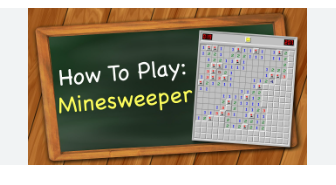Master the Game: Steps on How to Play Minesweeper, How to Play Squash, and How to Play Table Football
TL;DR
Whether you want to learn the logical strategy behind Minesweeper, get active on the court playing squash, or master the fast-paced skill of table football, this guide covers the essential steps on how to play Minesweeper, how to play squash, and how to play table football. You’ll find clear instructions, practical tips, and real-life advice that help boost your game and enjoyment. Dive into detailed sections designed to get you playing confidently in no time.
Steps on How to Play Minesweeper: Strategy Meets Logic
When I first encountered Minesweeper, I was fascinated by how a simple grid game blends chance, logic, and strategy. Understanding the steps on how to play Minesweeper not only unlocks fun but also sharpens your decision-making skills. Here’s a complete walkthrough to give you a winning edge.
text
Start with a Random Click
The game board is a grid of hidden squares, some containing mines. Your first click should be on a random square—this never triggers a mine on your first move. This reveals numbers indicating how many mines are in adjacent squares.
Use Numbers to Deduce Safe Squares
Each number tells you how many mines are adjacent. For example, if a tile shows “2,” exactly two mines are in the eight surrounding squares. Mark these suspected mine locations by right-clicking to place flags.
Flag Mines and Clear Safe Squares
Flagging suspected mines prevents accidental clicks. You can then safely click other tiles, clearing sections based on logical inferences. Patterns like 1-2-1 along a row help identify mine placements.
Master More Complex Patterns
Advanced players learn to spot complex configurations such as 1-1-2 or edge-based patterns. These insights minimize guesswork and speed up solving, which is crucial for higher difficulty boards.
Practice to Improve Your Intuition and Speed
Minesweeper rewards consistent practice—over time, you’ll recognize common clues and reduce errors. I recommend using tools like Minesweeper Online or Windows classic Minesweeper for training.
With these clear steps on how to play Minesweeper, your success rate will improve significantly, making every game both fun and mentally rewarding.
How to Play Squash: Techniques and Tactical Moves
Squash is one of the most intense racket sports requiring agility, speed, and strategy. When I first learned how to play squash, I was struck by the importance of court awareness more than raw power. Here’s a deep dive into how to develop your game.
text
Learn the Basic Rules and Scoring
Squash is played in a four-wall court between two players hitting a small rubber ball. The ball must hit the front wall above the tin and not bounce twice on the floor before the opponent hits it. Matches are usually best of 3 or 5 games, with games played to 11 points under the rally scoring system.
Master Your Grip and Strokes
A relaxed but firm grip enables swift maneuvering. Start with mastering forehand and backhand strokes, focusing on ball control rather than power. I’ve found that hitting with consistent accuracy near the front wall corner pressures opponents to move extensively.
Develop Court Positioning
Dominating the ‘T’ – the central position on court where the lines meet – vastly improves your ability to respond. After each shot, aim to return quickly to this spot to control the rally.
Work on Your Fitness and Endurance
Squash is a high-intensity sport; building endurance through cardio and sprint training helps sustain fast-paced rallies. My own improvements in stamina allowed me to maintain sharpness late in matches, often pulling ahead physically and mentally.
Practice Tactical Shot Placement
Use drop shots, boasts (shots hitting sidewalls first), and straight drives strategically. Keeping your opponent moving and guessing reduces their attacking options.
Understanding these fundamentals will transform how you approach how to play squash, ensuring consistent progress and enjoyment on the court.
How to Play Table Football: Fast Reflexes and Teamwork
Table football, or foosball, might look simple, but mastering how to play table football involves speed, coordination, and tactical thinking. Having played several local tournaments, I’m excited to share detailed tips to help newbies and intermediate players elevate their game.
text
Understand Table Layout and Player Roles
The rods control offensive and defensive players, goalkeepers, defenders, midfielders, and forwards. Knowing each position’s role helps coordinate passes and shots. I started focusing on controlling the midfield first to dominate ball possession.
Practice Ball Control and Passing
Smooth passing between rods keeps control and sets up scoring chances. I recommend practicing soft nudges and controlled pushes to keep the ball moving fluidly. Being quick but precise is key.
Learn Shooting Techniques
Shots like the pull shot, push shot, and snake shot require practice and wrist flexibility. When I sharpened my snake shot, my goal-scoring frequency almost doubled because it’s unpredictable and fast.
Enhance Reflexes and Anticipation
Fast reflexes and reading your opponent’s moves can prevent goals and create scoring opportunities. I often watch opponents’ grip and rod movements closely to anticipate shots.
Play Defensively with Positioning
Don’t neglect defensive tactics — using defenders strategically and switching quickly between offense and defense balances the game. I found that actively defending saves crucial points.
By focusing on these tips on how to play table football, your confidence and performance will noticeably improve during casual or competitive games.
Find Local Table Football Venues
Summary: Quick Recap on Steps on How to Play Minesweeper, How to Play Squash, and How to Play Table Football
Mastering your favorite games starts with understanding the basics. The steps on how to play Minesweeper teach you logical deduction and pattern recognition, ultimately improving your mental acuity. How to play squash combines physical fitness with tactical play and court positioning, making it a highly rewarding sport to pursue. Meanwhile, how to play table football hinges on quick reflexes, controlled skill, and strategic coordination between offensive and defensive plays.
I encourage everyone to invest time practicing these techniques, and you’ll find your gameplay becoming confident and enjoyable fast, whether it’s a digital puzzle, a dynamic court battle, or a lively table tournament.
Frequently Asked Questions
text
What is the best strategy to start playing Minesweeper?
Always begin by clicking a random square on the board’s center area to reveal the largest safe space and gain clues. Use the numbers to logically flag mines and clear safe squares gradually without guessing.
How long does it typically take to learn to play squash well?
Depending on your athletic background, it may take several weeks of regular practice focusing on technique, endurance, and court positioning before achieving proficiency capable of competitive play.
Can beginners improve quickly at table football?
Yes! Fundamental skills such as learning precise ball control and practicing shots can improve quickly with consistent 15-30 minute practice sessions. Playing with experienced players accelerates learning.
Are there online resources to practice Minesweeper?
Many websites offer free Minesweeper games that allow practice on various difficulty levels. One popular option is the classic Windows Minesweeper game; others include Minesweeper Online and Minesweeper X.
Where can I find squash courts or table football clubs near me?
You can locate courts and clubs using Google Maps by searching terms like “squash courts near me” or “table football clubs near me.” Many community centers and sports complexes offer rentals and leagues.
Final Tip for Enthusiasts
Whether cracking Minesweeper puzzles, sprinting on the squash court, or spinning rods at the table football arena, practice with patience and focus on fundamentals first. Progress flows naturally then, making every game a rewarding experience. Stay curious, keep challenging yourself, and enjoy every victory, big or small!

